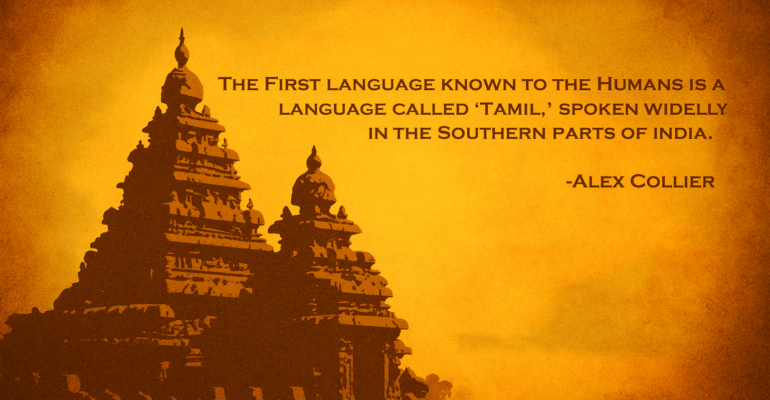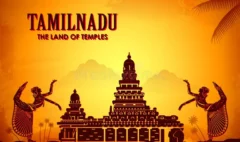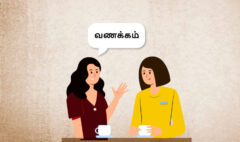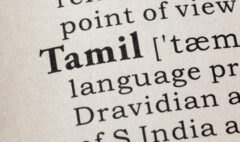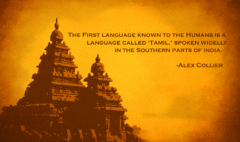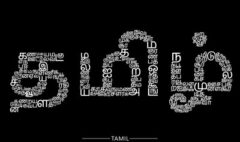The Role of Tamil in Indian Classical and Folk Dances
The Role of Tamil in Indian Classical and Folk Dances
The Role of Tamil in Indian Classical and Folk Dances: A Language of Movement and Emotion
Dance, in the Indian tradition, is more than just a physical art form; it is a sacred act of storytelling, a dynamic expression of devotion, and a vibrant celebration of culture. In the state of Tamil Nadu, this is profoundly true. The region is home to some of the most ancient, sophisticated, and energetic cultural dance forms in the world. From the divine grace of the classical Bharatanatyam to the raw, powerful energy of the folk dances, the dance traditions of the Tamil people are a cornerstone of their cultural identity. At the very heart of these traditions lies the Tamil language. It is the language of the songs, the poetry, and the stories that these dances bring to life. The connection between the dance and the language is an inseparable and deeply beautiful one.
To truly appreciate the classical dances of Tamil Nadu and the vibrant Tamil folk dances, one must have an understanding of the language that gives them their meaning and their soul. This guide will provide an introduction to the most important of these dance forms and will explore the essential dance vocabulary in Tamil that will allow for a much deeper and more meaningful appreciation of these incredible art forms.
Bharatanatyam (பரதநாட்டியம்): The Poetry of the Divine
Bharatanatyam is one of the most ancient and celebrated of all Indian classical dance forms, with its theoretical foundations laid down in the ancient Sanskrit text, the Natya Shastra. However, its modern form was shaped and nurtured in the temples and the royal courts of Tamil Nadu. It is a highly spiritual art form, a form of “bhakti” or devotion, where the dancer communicates the stories and the emotions of Hindu mythology through a precise and codified language of gesture and expression.
The Role of the Tamil Language:
The musical compositions that a Bharatanatyam dancer performs to are primarily in the Tamil, Telugu, and Sanskrit languages. The Tamil compositions are particularly important and include the works of great poets and composers. The dancer’s role is to be a living, breathing interpretation of the lyrics.
- Abhinaya (அபிநயம்): This is the expressive aspect of the dance. Through intricate hand gestures (முத்திரைகள் – muttiraikaḷ), facial expressions (பாவம் – pāvam), and body movements, the dancer acts out the meaning of the song’s lyrics word by word. To understand the “abhinaya,” one must understand the meaning of the Tamil words being sung. When the singer sings about a “flower” (பூ – pū), the dancer will form a specific hand gesture to represent a flower. When the song speaks of “love” (காதல் – kāthal), the dancer’s entire face and body will convey that emotion.
– Padams and Javalis: These are two types of lyrical, expressive compositions that are central to the Bharatanatyam repertoire. Many of the most famous of these are in Tamil, and they often explore the complex emotions of love and longing.
The Vibrant World of Tamil Folk Dances
While Bharatanatyam is the classical art of the temple and the stage, the Tamil folk dances are the raw, energetic, and celebratory dances of the people and the village. These dances are performed at festivals, harvests, and other community celebrations, and they are a vibrant expression of the spirit of the land.
Karakattam (கரகாட்டம்): The Dance of the Balanced Pot
This is one of the most famous and visually spectacular of all Tamil folk dances.
- Description: The dancer, often a woman, balances a tall, ornate pot (கரகம் – karakam) on her head and performs a series of intricate and acrobatic movements, all without letting the pot fall.
– The Language Connection: The dance is performed to the energetic beat of traditional folk music, and the songs that are sung are often in praise of the rain goddess, Mariamman. The lyrics are in a simple, rustic form of Tamil that is easy to understand and tells stories of village life and devotion.
Oyilattam (ஒயிலாட்டம்): The Dance of Graceful Steps
The name “Oyilattam” literally means “the dance of grace.”
- Description: It is typically performed by men, who stand in a line and perform a series of rhythmic and graceful steps. The dancers wear ankle bells (சலங்கை – calaṅkai) and hold a colored handkerchief in their hands.
– The Language Connection: The dancers themselves often sing in a call-and-response format, telling stories from the epics like the Ramayana, with one person singing a line and the rest of the troupe repeating it.
Therukoothu (தெருக்கூத்து): The Street Theatre
This is a vibrant and powerful form of street theatre that is particularly popular in the northern parts of Tamil Nadu.
- Description: It is an all-night affair, performed in the open air, that combines song, music, dance, and improvisational dialogue. The artists wear elaborate costumes and dramatic makeup.
– The Language Connection: The stories are almost always drawn from the Mahabharata. The dialogue is a fascinating mix of formal, poetic Tamil for the main characters and colloquial, often humorous, slang for the jesters and side characters. It is a true showcase of the different registers of the Tamil language.
Essential Dance Vocabulary in Tamil
- Dance – நடனம் (Naṭaṉam) or ஆட்டம் (Āṭṭam)
- Art – கலை (Kalai)
- Artist – கலைஞர் (Kalaiñar)
- Song – பாடல் (Pāṭal)
- Music – இசை (Icai)
- Rhythm – தாளம் (Tāḷam)
- Stage – மேடை (Mēṭai)
– Ankle Bells – சலங்கை (Calaṅkai)
Conclusion: A Language That Dances
The incredible cultural dance forms of Tamil Nadu are a feast for the eyes and the ears. They are a powerful expression of the region’s history, its faith, and its joyful spirit. The Tamil language is the soul of these dances; it is the narrative thread that gives them their meaning and their emotional power. To watch a performance of the classical dances of Tamil Nadu or to witness the raw energy of a folk dance is to see the language itself take on a physical, breathing, and beautiful form. It is a powerful reminder that in Tamil culture, the word, the song, and the dance are all part of the same, beautiful, and inseparable story.

